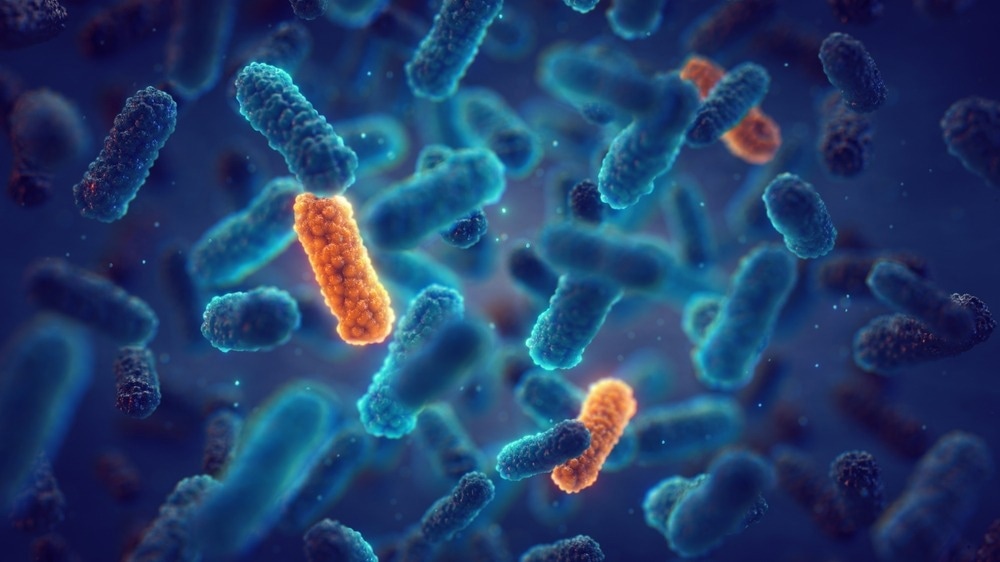In a recently published article in Heliyon, researchers discuss the potential of nanotechnology-based nanomaterials as a substitute for antibiotics in monogastric animals.

Image Credit: nobeastsofierce/Shutterstock.com
The article highlights the emerging need for alternative strategies to combat bacterial infections in animals due to the rise of antibiotic-resistant bacteria. Nanotechnology is presented as a promising solution to improve animal health and productivity while reducing the risk of antibiotic resistance.
Background
Antibiotic resistance has emerged as a global health crisis, posing significant challenges in treating bacterial infections in humans and animals. The overuse and misuse of antibiotics in livestock farming have contributed to the development of antibiotic-resistant bacterial strains, threatening food safety and public health. In response, there is a growing need for alternative strategies to combat bacterial infections in animals while reducing reliance on traditional antibiotics.
Nanotechnology has garnered increasing attention as a promising avenue for addressing antibiotic resistance in monogastric animals. By leveraging the unique properties of nanomaterials, such as their small size, high surface area-to-volume ratio, and tunable physicochemical characteristics, researchers aim to develop innovative approaches to enhance animal health and well-being.
The Current Study
Nanomaterials were synthesized using various methods, including chemical precipitation, sol-gel synthesis, and physical vapor deposition. For instance, silver nanoparticles (AgNPs) were synthesized by reducing silver ions using a reducing agent such as sodium borohydride under controlled conditions.
Gold nanoparticles (AuNPs) were prepared by reducing gold salts with a stabilizing agent like citrate or sodium borohydride. The size and shape of nanoparticles were controlled by adjusting reaction parameters such as temperature, pH, and reaction time.
The antibacterial activity of nanomaterials was evaluated against a panel of pathogenic bacteria, including Escherichia coli and Staphylococcus aureus, using standard microbiological techniques. Minimum inhibitory concentration (MIC) assays were performed to determine the lowest concentration of nanomaterial required to inhibit bacterial growth.
Time-kill kinetics studies were conducted to assess the bactericidal effect of nanomaterials over time. Using fractional inhibitory concentration (FIC) assays, the synergistic effects of nanomaterials in combination with conventional antibiotics were also investigated.
Animal studies were conducted to assess the safety and efficacy of nanomaterials in vivo. Rodent models were used to evaluate the pharmacokinetics and biodistribution of nanoparticles following oral or intravenous administration. Histopathological analysis of vital organs such as the liver, kidney, and spleen was performed to assess potential toxicity.
Blood samples were collected to measure inflammatory markers and immune responses following nanomaterial exposure. The impact of nanomaterials on gut microbiota composition and overall animal health was also investigated.
Statistical analysis was conducted using appropriate software such as GraphPad Prism or SPSS. Data from antibacterial assays and in vivo studies were analyzed using one-way analysis of variance (ANOVA) followed by post-hoc tests to determine significant differences between experimental groups. Results were expressed as mean ± standard deviation, and p-values <0.05 were considered statistically significant.
Stringent quality control measures were implemented throughout the study to ensure the reproducibility and reliability of results. Key parameters were monitored during synthesis to maintain the batch-to-batch consistency of nanomaterials. Standard operating procedures (SOPs) were followed for all experimental procedures to minimize variability and ensure data accuracy. Instrument calibration and regular maintenance checks were performed to guarantee the validity of experimental outcomes.
Results and Discussion
The study demonstrated the significant antibacterial activity of nanomaterials against a range of pathogenic bacteria, including Escherichia coli and Staphylococcus aureus. The MIC assays revealed the potent antimicrobial effects of nanoparticles, with low concentrations effectively inhibiting bacterial growth. Time-kill kinetics studies further confirmed the rapid bactericidal action of nanomaterials, highlighting their potential as alternative antimicrobial agents. Moreover, synergistic effects were observed when nanomaterials were combined with conventional antibiotics, enhancing their antibacterial efficacy.
The in vivo findings provide crucial evidence of the safety profile and therapeutic potential of nanomaterials in animal health. The ability of nanoparticles to target specific pathogens while minimizing off-target effects is a significant advantage in promoting animal well-being. The modulation of immune responses and gut microbiota by nanomaterials also suggests broader implications for animal health and disease prevention.
Conclusion
The use of nanomaterials in animal health holds significant promise for addressing bacterial infections in monogastric animals.
While nanotechnology-based approaches offer numerous benefits, including reduced reliance on antibiotics and improved animal health, comprehensive evaluation of efficacy, safety, and long-term impacts is essential.
Further research is needed to fully understand the potential of nanotechnology in animal health and ensure its safe and effective application in livestock farming.
Journal Reference
Qadeer, A., et al. (2024). Use of nanotechnology-based nanomaterial as a substitute for antibiotics in monogastric animals. Heliyon. doi.org/10.1016/j.heliyon.2024.e31728